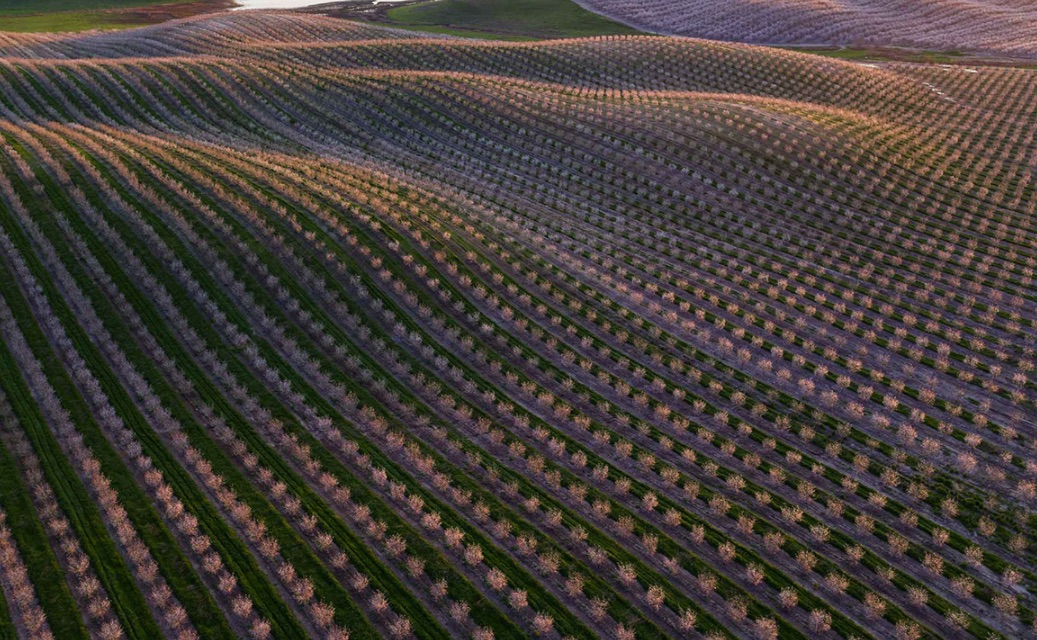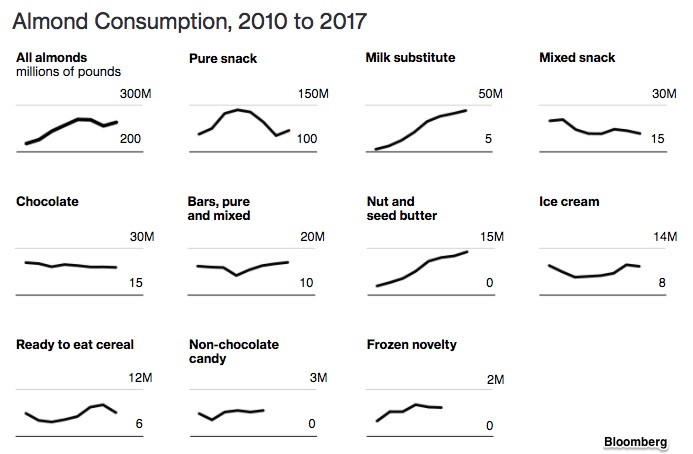Almonds are back.
After California’s drought ended, almond harvests touched new highs. Below you can see the dip for the drought and then the recent uptick:
Meanwhile, we are also eating more almonds:
Where are we going? To what we might not know about almonds.
1. How We Eat Our Almonds
While we still consume a lot of plain almonds, as milk and butter, they have become much more popular:
2. Shaky Harvests
The average almond tree produces more than 5,000 nuts a year. By diminishing the need for labor, these trunk shakers increase productivity. (Do watch for a minute. The video is amazing!):
3. Boosting the Bee Population
Last year, from January through March, half of the U.S. commercial bee population was in California. Since almond growers need more pollination than any other crop, they are a major source of demand for the beekeepers who crisscross the country in their trucks. So, you can see why their continuing demand was crucial when Colony Collapse Disorder reduced the number of bee hives and increased their cost. By absorbing the extra expense, almond farmers helped beekeepers recover during a rough time.
4. Water Consumption
It appears that nuts are a thirsty crop. Whereas each almond needs a gallon of water, walnuts–a distant second in popularity–need much more:
Our Bottom Line: Almond Markets
Whenever you look at a market from the top down, you see a deceptively simple big picture. As we saw above for almonds, their quantity supplied and quantity demanded are up. However, with many sellers and buyers independently making decisions, markets are always more complex.
Markets can take us to what fractal mathematician Benoit Mandelbrot said about the British coastline. From afar we see the big picture of a smooth curving line. But look more closely at the coast–and at almonds–and you see the zigs and zags you might not have known.
My sources and more: If you read just one article for more detail, do go to this Bloomberg discussion of the almond. It has it all. But for more, FT is also up-to-date and this UC Davis cost study is chock full of nuts facts.
Our featured image is of Crabtree Farm near Modesto Reservoir from Bloomberg.










